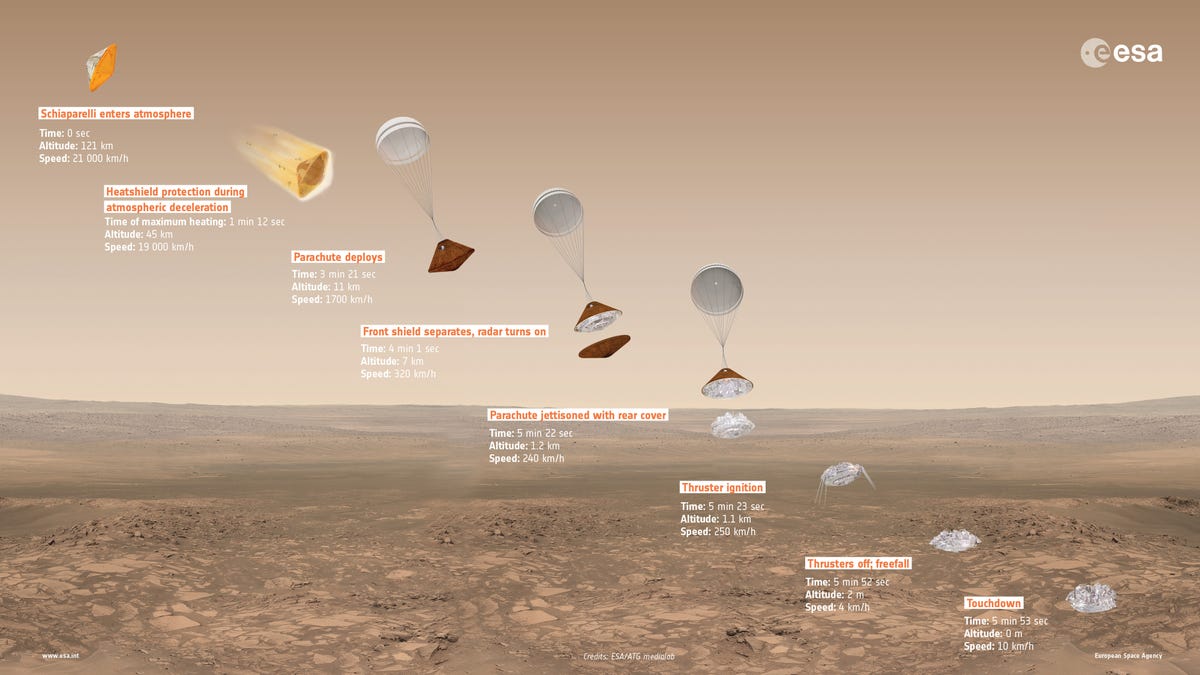Europe's Mars lander got lost (or worse) on way to Red Planet
The European Space Agency's Schiaparelli lander should be on the surface of Mars right now. It might be, but if it is, it's sure being quiet about it.

The European Space Agency had hoped to establish contact with its Mars lander by now, but it's beginning to look like the craft may never phone home.
The test lander -- the EDM, or Entry, Descent & Landing Demonstrator Module -- goes by the nickname Schiaparelli and made its descent toward Mars on Wednesday morning.
The plan was for Schiaparelli to be slowed by atmospheric drag and then by parachute. As it neared the Martian surface, the lander was supposed to jettison the aeroshell protecting it from all the heat created by entering the atmosphere. The final step was for the lander to fire its hydrazine thrusters till it came to hover about six feet from the ground. Then the thrusters would cut out, and Schiaparelli would fall the last couple of meters, coming to rest somewhere near NASA's Opportunity rover.
Speaking at a press conference in Germany on Wednesday, scientists with the European Space Agency said all seemed to be going well just moments before the anticipated landing, when Schiaparelli's radio signal suddenly went silent.
As the hours passed with no word from Schiaparelli directly or via the ESA's 13-year-old Mars Express satellite or NASA's Mars Reconnaissance Orbiter, it became clear things had not gone as planned.
There's still hope for Schiaparelli though. If it made it to Mars in one, functional piece, it should have enough battery power to keep going for up to 10 days, providing a number of chances to call home.
And if it's lost, it won't be a disaster for Mars science, as the lander was meant mostly as a technology demonstrator.
The craft is just one part of the ExoMars mission, which managed to successfully insert Europe's second orbiter, the Trace Gas Orbiter (TGO), around Mars on Wednesday. TGO carries a variety of scientific equipment to measure and observe the Martian environment from orbit, where it joins the Mars Express.
TGO carried Schiaparelli with it to Mars, releasing it on Sunday, three days before the scheduled descent.
Schiaparelli's loss wouldn't be a catastrophe, then, but it was designed to gather some observations from the ground, including the potential for new insights into the forces that trigger Mars' infamous dust storms.
ESA says it will have experts looking into the lander's situation through the night and will hold a press briefing with an update on the situation at 1:00 am PT Thursday.

